Don't wanna be here? Send us removal request.
Text
Journal 10: Post Conceptions
In my first journal, I wrote that my sense of place was my Emotional Support Animal named Navii. Though she does help with my anxiety and give me a sense of place, I found my new sense of place while volunteering for University Colloquium.
As discussed in my first journal, University Colloquium is a required class by all FGCU students discussing the environment and environmental factors of humans. There is a service learning component attached to the class, that requires 10 hours of environmental community based service. I chose Calusa Nature Center and Planetarium as my service-learning component and ended up finding my true sense of place. While volunteering at Calusa, I was experiencing symptoms of panic and anxiety (from previous causes, lasting weeks), and had not found repreave. When asked to pick up trash from the nature trails found at Calusa, I found a connection with nature that I had not experienced before. At this point, I used nature as a way to release anxiety and ended up going for multiple days straight, excited to pick up trash from the nature trails as my first duty.

Throughout the semester, I grew from learning about how many organizations are trying to incorporate sustainability into everyday life. For example, the last field trip that was requires was to a local waste management plant in Fort Myers. This plant was special, but incinerating trash to create energy and releasing only vapor into the air with production. This company also recycles, the five basic components to recycle, along with separating metals from trash.
Echo was probably my favorite field trip from this course. This is a farm, with two other outposts in different countries, that works to create sustainable farming techniques to third-world countries. They create seeds to be packaged and shipped for growing purposes, ways to introduce solar cooking, ways to incorporate farming on non-fertile soil, and many other techniques to help build a better life for those who are impoverished.
I found that because of this class, I have reduced my waste output, recycled more, incorporated the use of reusable bags to cut down on plastic bag usage, and switched to local farming to help become more sustainable from a micro-level. Though I was a vegetarian before the class started, the learning outcomes from our class have reaffirmed my dietary restrictions have improved life quality in small ways.
Originally, I thought University Colloquium was just another course I had to take to be closer to graduation. With the closing of this semester, this class has positively impacted me to change my ways to become more sustainable, and appreciate the world around me. It has also helped me step back from my major and minors (that are social and human behavior based) and focus on an environmentally based subject, almost as a break from my normal classes.
0 notes
Text
Journal 8: ECHO and the Food Footprint
1. The ECHO farm helps improve the lives of the impoverished by providing solutions to hunger. This involves agricultural support for small scale farmers, education for small scale farming, seeds and ideas to create sustainable environments, and more. There are three different locations for ECHO farms and education, Fort Myers being where the most testing is done; the other two locations are in Africa and Thailand. The Fort Myers farm is used as a research farm to test new seeds, new farming techniques, and new ways to provide for small areas. For example, the farm promotes sustainability by showing ways to grow crops in land that is desert like; sack gardens (sacks filled with soil and plants) are used to promote crop fields, manual water pumps to help gain clean groundwater for villages, and rooftop gardens to promote the growth of food without paying high taxes on land.
One piece of adaptive technology I found interesting at ECHO farms was a bike that grinds grains into a fine powder. The back wheel of the bicycle is replaced with a concrete slab; an individual rides the bike and the weight of the concrete back wheel provides kinetic energy to work the grinder for the grains. This is a cheap and effective way to provide grains for families, without making the individual as tired.
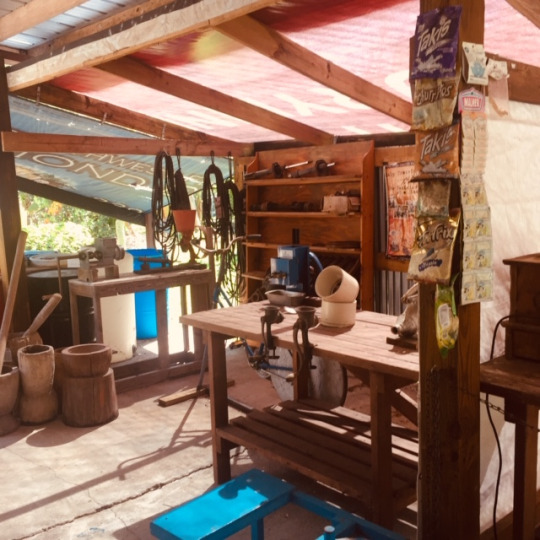
There are many plants that the ECHO farm produces to provide for impoverished areas, two in particular are my favorite. This first plant pictures is a Cherry Hibiscus plant; this can be used in teas and is tangy and sweet. The second plant pictures is more beneficial; the neem plant is one that is known as “the plant with 40 cures.” Neem oil is very beneficial as an anti-inflammatory, as well as for dental hygiene. From the farm, I realized I can use neem in my own life (with my dental hygiene), and promote sustainability with gardening techniques learned while on the property (composting with worms when applicable, not using plastic bottles as much as possible and recycling them when I do use plastic bottles).

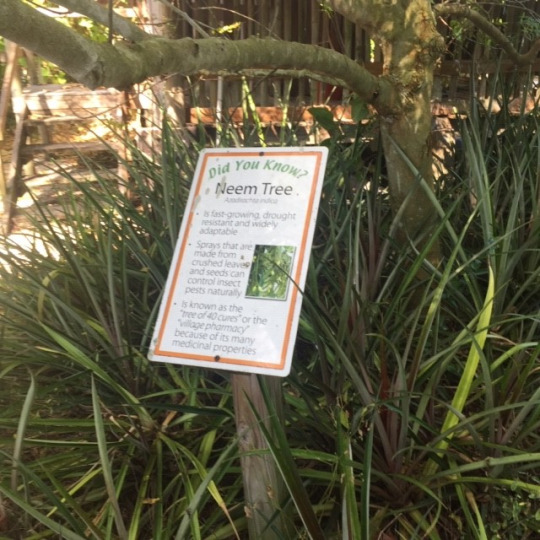
2. When I was younger, my mother had a garden that specifically targeted the growth of the bee and butterfly population; we also had our own mango and coconut trees that would provide fresh fruit when we wanted. Unfortunately, most of these beautiful pants were destroyed by Hurricane Irma and my parents have not had enough income,or time, to restart their garden. We were lucky enough to not have to grow food in order to provide for the family, and I never went to bed hungry for food. Though I have never experienced this, my father lived in Haiti for close to 10 years with similar problems facing his neighbors. Some of my father’s neighbors had to drive/walk close to 15 miles for clean water since they had no access to plumbing (my father had to take bucket showers every time he visited his grandmother because she did not have running water). When my father came back into this country, his family focused on buying food from grocery stores (mostly processed and cheap). Growing up, my parents would buy organic produce, but not as much locally grown. Since moving from my parents house, I try to go to as many local produce fairs as I can to get fresh produce (I do not eat meat or fish or dairy so these trips are usually easy). Seeing the amount of fruits and vegetables that are processed in stores (along with the obscene amount of plastic packaging surrounding it) has made me think differently about how I purchase food. Since ECHO, I have also limited the amount of plastic I have brought into my apartment as a result of the plastic homes that were shown built in Nigeria (only using resuable bags to buy produce and other goods, not bringing in plastic water bottles unless they can be recycled). The food grown locally can be surprisingly cheap (my last trip for 2 full bags of produce was just under $10!), but the trip to get there is close to 40 minutes (which eats gas and hightents my consumption for fossil fuels) and can be a downfall of going fully local. By making trips that are carpool friendly, and only buying what I need, I can reduce my footprint on food.
0 notes
Text
Journal #3: Koreshan Historic State Park
I. The Art Hall
When first entering the park, the tour guide led us into a building that was considered the art hall. This building was the center to where the Koreshan’s held their religious ceremonies led by their founder, held college classes that pertained to the workings of the camp, and played music and showed art for the residents. The art hall displays the histories of the Koreshan’s, with their founder Dr. Cyrus R Teed, and his revelations.
Teed was adamant that G-d had told him the inner workings of our world. The universe was entrapped in the Earth, and that human beings would be immortal if they practiced celibacy. Women and men were held at the same standard, and their G-d was neither man nor woman. With this revelation, Teed decided to spread this message with creating a society of 10 million; only 200 joined. Teed gathered higher-class individuals, or individuals who were from rich beginnings and backgrounds, to join the commune (cult). These individuals agreed to give up all their worldly possessions, and live on a commune. On this commune, they developed a college that was considered “pioneer university,” and held public concerts with orchestrations. Those who donated land could also be a part of the commune, but not have to be celibate.
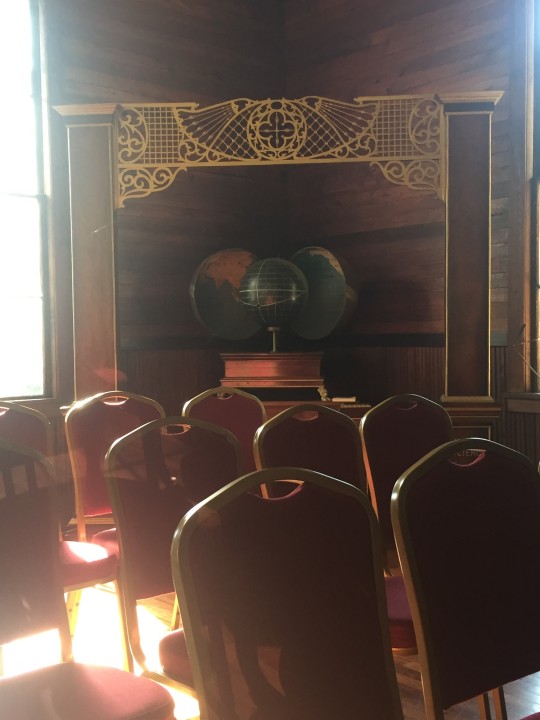
A representation of how the universe was entrapped inside the Earth.

How the commune would have finally looked if 10 million people had originally joined. The center would be in Estero, Florida, where the commune was located.
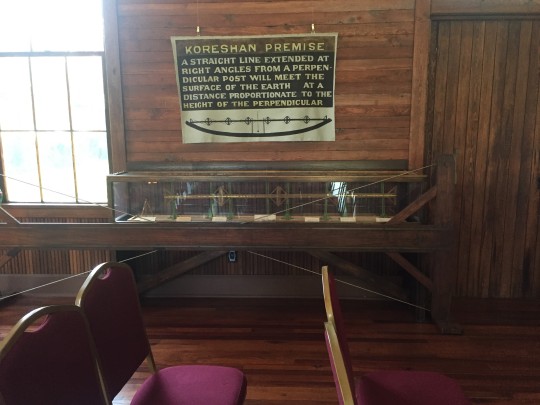
Teed’s “proof” that the universe was trapped inside the Earth. It was flawed, because it could be easily manipulated to help prove his theory/revelation.
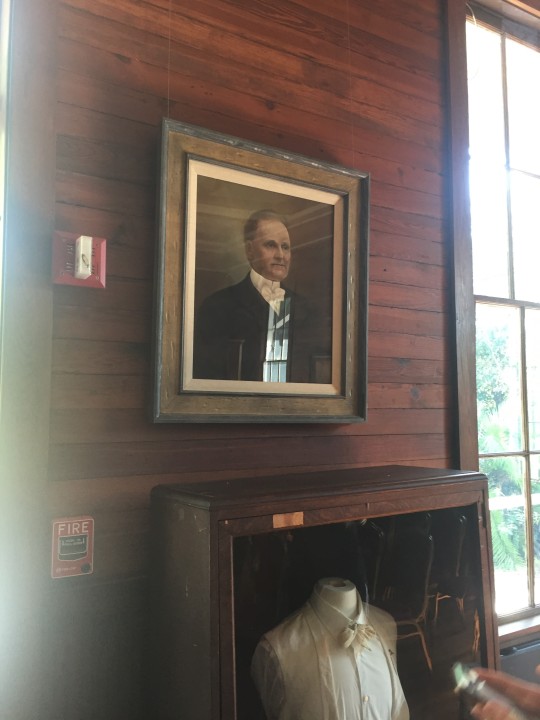
A photo of the leader of the Koreshan’s, Dr. Cyrus R. teed. After his death in 1908, the population of the commune declined rapidly; by 1956 only 5 members remained as identifying as a Koreshan.
II. General Store
Walking outside from the art hall and onto the main portion of the commune is the general store. This store was special, because it was the first sign that the Koreshan’s were sustainable. This store was the only store between Fort Myers and Naples at one point in time. All the food from the store was grown on the Koreshan land (that stretched 300 acres). They sold local fruits, bread baked on property, molasses, and even gin. The original general store was burned down in 1938, but a new one was created shortly after with wings that held workers.
The Koreshan’s realized that while they wanted to abstain from the use of money, they needed certain resources that they could not produce themselves. Anything that they could not make on their own, they would purchase from the income of their many business ventures. They had a concrete plant, made pots and flower erns, made own electricity and sold to neighbors( used until 1946 when FPL was developed), had lumber mills, publishing house, gas station, camp ground. They had lot of business because of their need for musical instruments in their public concerts and parts for generator they built themselves.

A window of the general store; tourists can read descriptions of what was being sold at this store.
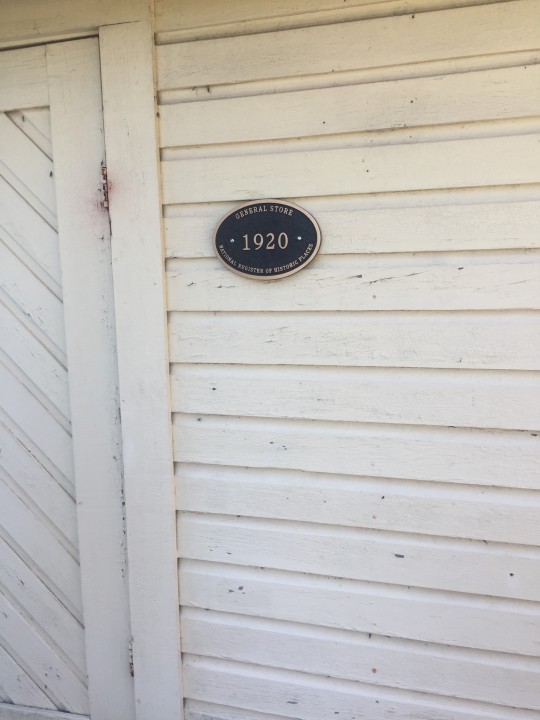
A plaque placed outside of the general store for when it was rebuilt. It is now condemned due to water damage, so there are no pictures of the inside. :(
III. Bamboo Landing
This area was the docking area of the commune. They imported bamboo, which is actually a grass. After a while, the Koreshan’s realized that many individuals were using the canal and money could be generated. The Koreshan’s began to tax individuals, almost like a pay toll on a main highway, while they pass through their portion of the canal. The local residents did not take to this idea very well, and the tax was taken down.
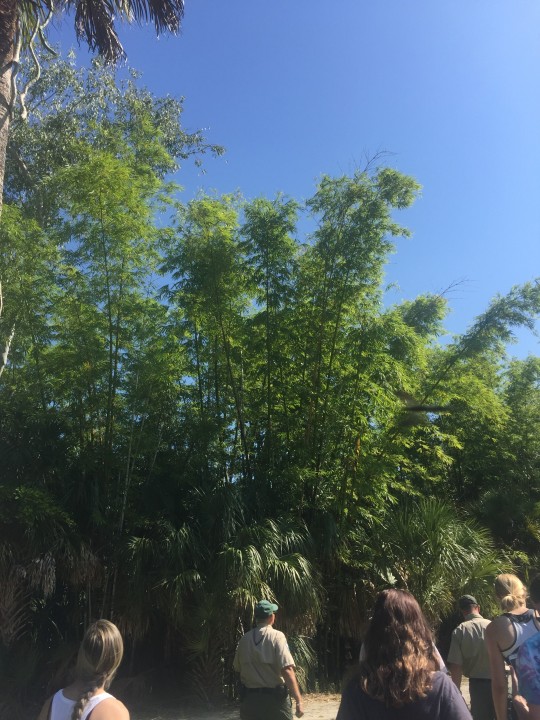
Bamboo trees that resided on the Koreshan commune. This was next to the docking area for fishing boats, and for travel.
IV. Founder’s House
In the founder’s house the founder, Cyprus Teed, and his wife Victoria reside in the upstairs portion of the facility. After Cyprus’s death, the commune did not take to Victoria’s instruction (they never liked her) and she only lasted four months as the Koreshan leader. She eventually fled and married a dentist, forgetting about her past. Before Victoria left, they had a grand sitting/tea room, where they would house guests and show that they still maintained an extravagant culture. Along with the beautiful furnishings, we were able to see historic pictures of the members who resided in the commune. One by the left-hand side of the front door showed children who were introduced to Koreshan society; these children were not born into the society. Since this society believed in abstinence, no children were born and the population died because of this. All the children that resided in the commune were separated from their parents, in order to eradicate parental roles and make the commune more of a community. None of the children that were pictured below stayed in the commune until death.
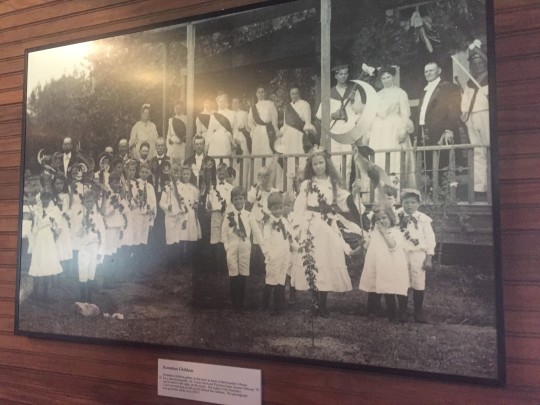

A recreation of the sitting room Cyrus and Victoria had in their home.
V. Planetary court
The planetary court was made up of 8 women who oversaw the operations of the Koreshan society. These women dealt with money, led trade deals, and sought for the welfare of the community. The home that these women resided in could have fit 20 indidviduals at a given time, only 8 women and a man who helped the women lived in the home. Outside of the home, a gutter was attached to collect rainwater for washing dishes/clothes; this is another example of how this society practiced sustainability.
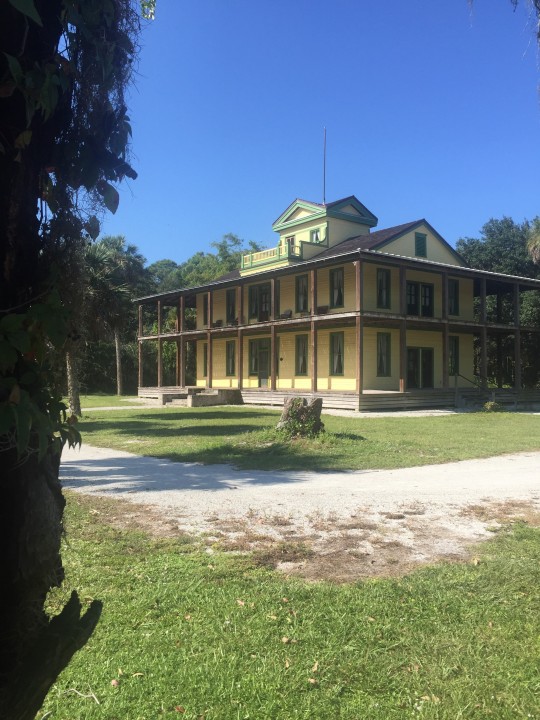
An outside picture of the home for the planetary court. Rooms wrap around the entirety of the building.
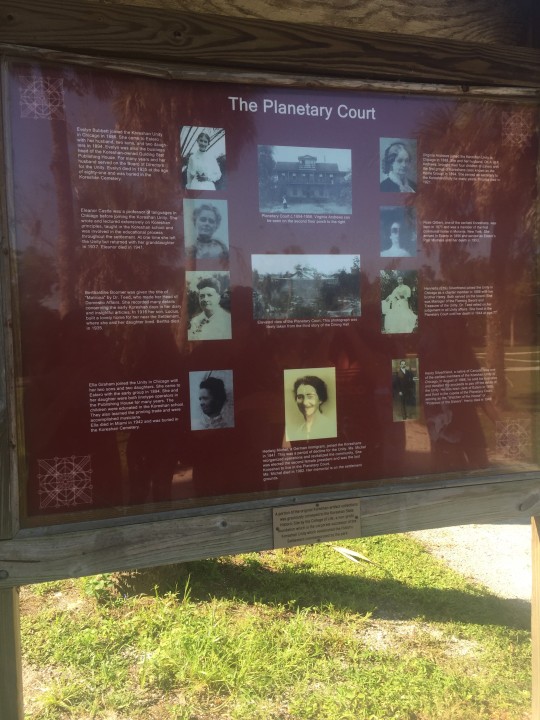
The women who make up the planetary court and the one man that helped with external endeavors for the women.
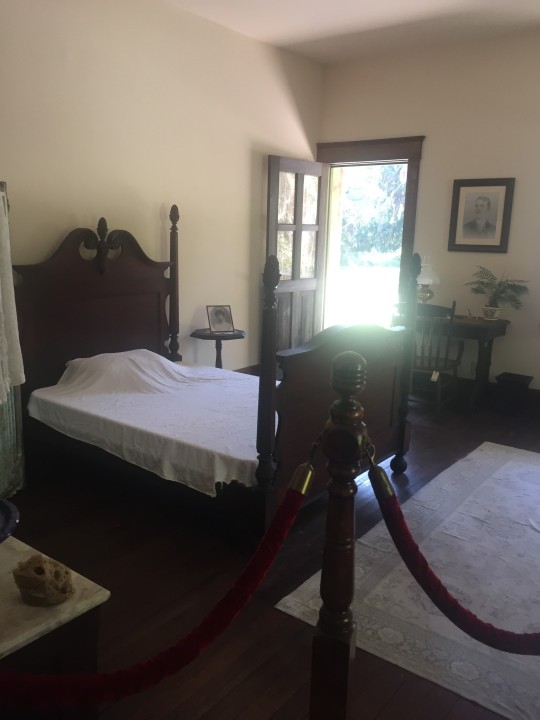
An example of a room a women would have when residing in the planetary court. The house was built with wood paneling, sculptured wood that was used in large sailing ships, and much more privacy than the men tended to have.
VI. Bakery/ Members cottages
The Bakery was used for the general store, and produced more bread than a navy ship would produce for its men (over 500 loaves of bread). They owned 2-3 huge scale ovens to bake their bread, and the individuals who worked the ovens did not ususally stay in beautiful corners.
The cottages where the individuals who did not remain abstinent, and men, would reside in a hut looking cottage that was in no way the level of luxury the women seemed to have in the planetary court. They were considered shotgun buildings, because just like the barrel of a shotgun you can look to forward and see straight to the back of the room.
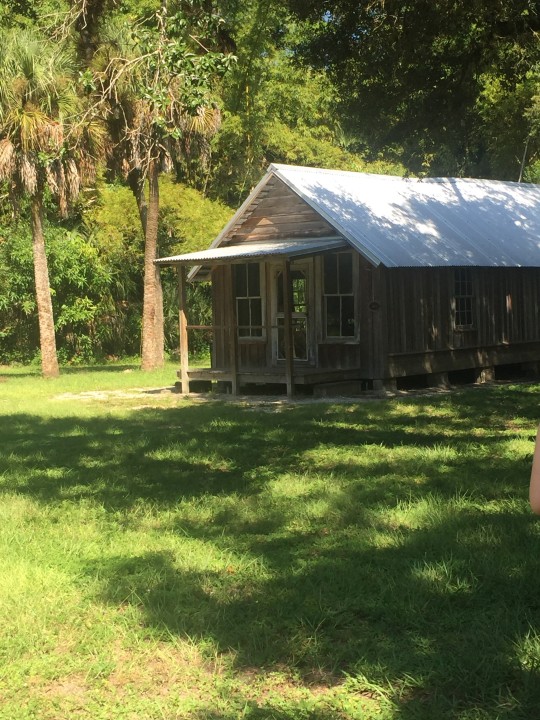
An example of a member’s cottage. Usually 13+ individuals would reside in this cottage.
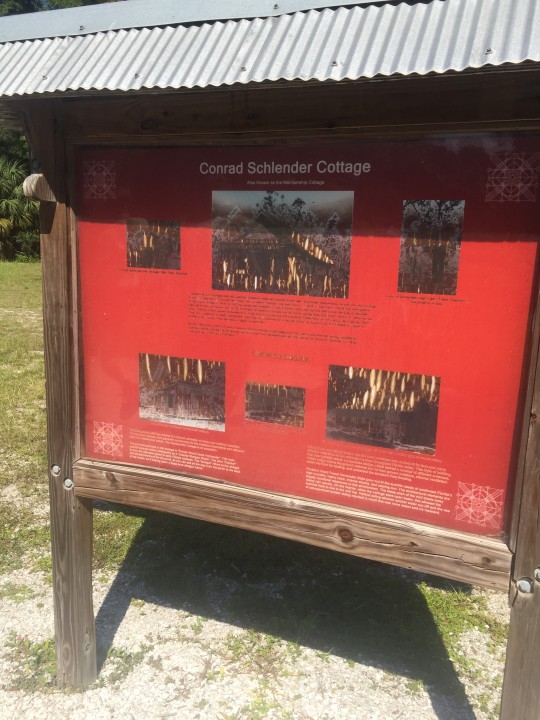
A further explanation of the cottage.
VII. Industrial area
Proof that the Koreshan’s could be considered sustainable was in their industrialized area. They had developed a laundry mechanism, that both men and women would operate, that would run on a motor and be helped with physical labor. They also developed a whole building to construction, even having drills that you would run from the gears that lay above your head.
A few steps away, a building holding a generator was held. The Koreshan’s learned how to generate electricity and become self-sufficient without the need for other members of external communities. Though there are no surviving members, volunteers will help get the generator running to this day.
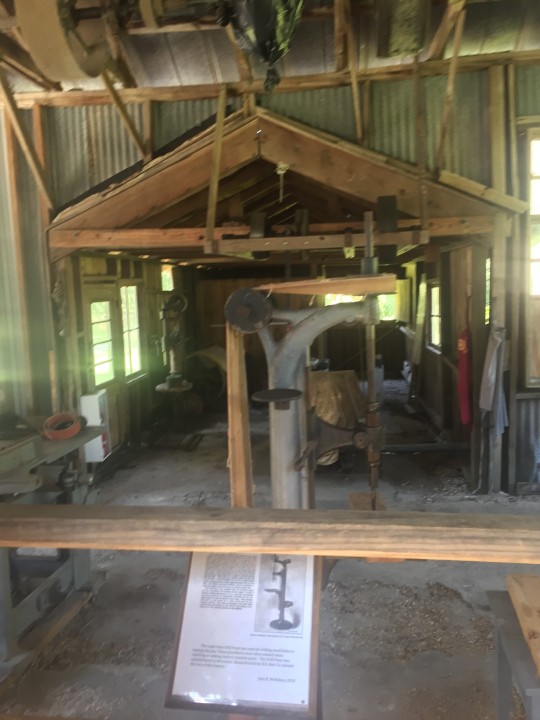
A drill that was used for construction, and was started up by the gears held above the drill.
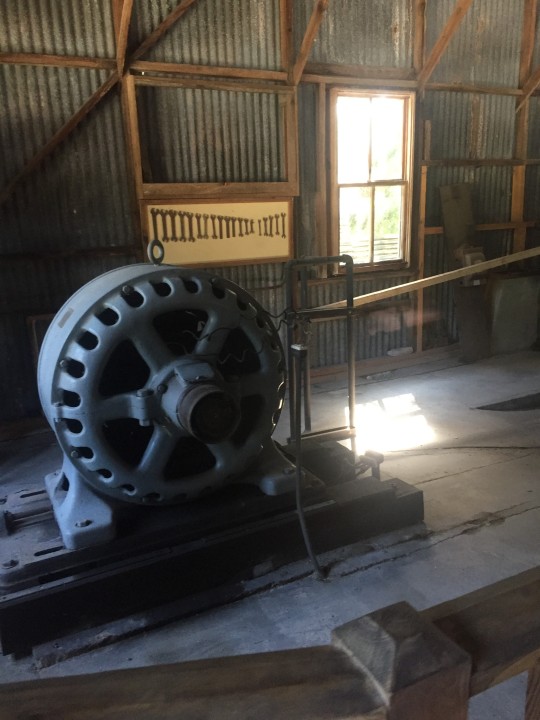
The original generator that the Koreshan’s used to generate electricity for their commune. They would run wires underneath the ground in order to not clutter the physical surroundings of the compound.

An old picture of the original generator.
0 notes
Text
FGCU Sustainability Efforts, Nature Trail Walk, and Ecological Footprint
I.FGCU focus on environmental sustainability
Florida Gulf Coast University is known throughout Florida as a college that actively participates is sustainability efforts. While taking our first fieldtrip, we learned about advanced ways that FGCU uses for sustainability. For example, the College of Arts and Sciences (Seidler Hall) incorporates high efficiency lighting fixtures, energy efficient windows, and a more efficient air conditioning system that is more energy efficient than what would be in a conventional building. We explored the actual air system, in which FGCU uses ice to cool the buildings during the day and the ice regenerates at night. Around campus, solar panel compacted trash cans are used to help reduce waste output and trip accumulation to dumps. We also walked across whitikar bridge; this bridge is special because it is made of Ipe wood. Ipe wood is very dense and acquires little mildew and mold from being exposed to water, while also being very heat resistant. This allows for less repairs and trees being cut down to make a new bridge. These attributes of FGCU campus help to expose newer ways of sustainability, while also using less energy for a full college campus; this encourages the college’s message for changes in the environment. I believe this campus connects to the hummingbird video shown in class; this campus shows that small efforts can leave a big impact and that the university is doing the best it can to promotes sustainability efforts. (pictures

Group walking on the Whitaker bridge made of Ipe wood.
II. Learning from the nature trail
a) The Pine Flatwoods
The Beginning of the true nature walk was when we entered the first ecosystem area. The pine flatwood area was covered in sable palmettos, Florida’s state tree (even though it is not a true tree). Sable palmettos are covered in spikes called “boots” that help create micro ecosystems for smaller living organisms. We can see symbiosis with these “trees” when we look closer and realize that rabbits foot ferns also benefit from sable palms. Shoe string ferns also grow in this areas; they’re epiphyte plants, meaning they grow on another plant and are not rooted in soil. When going deeper in the pine flatwood area, we saw what could be described as invasive species; ceaser weed surrounded a designer burned (help regrow plants, promote healthy soil, etc.) portion of the flatwood. Volunteers go and pick ceaser weed on off days, just because it will root in the soil that is intended for species naturally grown in Florida.

Sable Palmetto with rabbits foor fern growing towards the root of the tree. Saw palmettos (spikey ones towards the left) are also shown.

This picture shows the after effects of a prescription fire. Also pictures are the invasive species, ceaser weed (small green plants that are scattered along the ground).
b) The Oak Hammock
Once we left the pine flatwood area, we began to reach the flooded areas of the nature preserve. At this point on the trip, it was only to our shins so there was only a slight uncomfortable feeling. This transitional period is called the ecotone, or the transition of ecosystems. Surrounding us were oak trees, and taller trees that would usually be seen in northern parts of the country. The trees also seemed to have stronger roots than in the pine flatwoods area; the bases of the trees had very strong roots that the whole group would trip over when trying to walk through water. This portion of the nature walk was longer, and we even spotted poison ivy on the way to the last portion of the nature walk.

Examples of oak trees found in the Oak Hammock portion of the nature walk.

Example of the water height when we first entered the oak hammock.

Poison ivy pictured when first entering the Oak Hammock.
c) Cypress Dome
On the last area of the nature walk, we were in waist/chest high water. The roots of the trees were deeper in the water, and no one was able to truly see the ecosystem’s floor. Walking to the cypress dome, were able to spot a beautiful floral (possibly lavender) plant along with apple snail eggs (an organism that frequents tropical areas that receive drought/heavy rainfall).
Entering the dome was another experience in itself. The trees that reside in the dome get their water from the newly created lake/river. It becomes a collection bank of rainwater that immolates a swamp-like ecosystem that eventually distributes the water to the surrounding areas. At this point in the walk, fish were seen swimming around us. Certain algae was seen on the trees to help with the filtration of air quality. The air was clean and crisp, the water was refreshing, and I didn’t know how calm an area surrounded by water and trees could be, until you look up at the sky from that point of view. The whole class was able to enjoy about 5-7 minutes of silence, listening to the organisms around us and their inner-workings.

Possible lavender plant spotted when entering the cypress dome.

Apple snail eggs pictured, about a minute from the entrance to the dome.

The class inside the dome, experiencing waist high water.

Beautiful picture of the camera looking up while inside the cypress dome.
III. FGCU Campus and Sense of Place
My sense of place on campus would be the library green lawn. It is currently under-construction, but I remember sitting out on the lawn for hours doing homework, hanging out with friends, watching clubs promote their meetings, and more. It became the meeting spot for my first friend group at FGCU; not only was it beautiful (and shady) but there was enough stillness (even with campus being active) that homework could be done and meditation could be done. I was attracted to this spot because of how close in proximity it is to the library; I study a lot and when I lived on campus I technically lived in the library. You could also experience the Florida breeze better from this spot on campus. It makes me understand a sense of place more, because when I came back to campus this semester and the grass was gone I felt saddened. For my first day back, I wanted to sit in the library lawn, listen to music, and reach my next class. Since my sense of place was destroyed (it was undergoing renovations), I was able to understand the impact it had left on me.
IV. Ecological Footprint Score
After taking the ecological footprint test, it showed that my personal Earth overshoot date is November 30th, 2019. It seemed most of the graph that contains my uses was mostly filled with carbon emissions, this being from my car. I also saw that an average human can live with a 1.7 footprint score, and I received a 1.9. I believe this is a better score than most individuals would get, but If I continued my vegan diet, carpooled to class more often, and possibly look into a new car, I can lower my footprint. My carbon footprint is the biggest issue; I drive an older car that was given by my parents since I could not afford the purchase of a car when I was 16 years old. It is more ecologically efficient than most gas guzzlers, but it is still a car that does not have as many miles per a gallon when compared to an energy efficient car. Since I still do not have the funds to purchase a new car, I can start using the free shuttle service my apartment building offers when it correlates to my class schedule. I can also try to carpool to and from work to save the need to purchase more gas and reduce the emissions my car puts into the environment.
0 notes
Text
My Sense of Place
My name is Haley and I’m a Psychology major/ Sociology minor attending Florida Gulf Coast University.
My sense of place, or where I feel safe and at peace, is not a place at all. In fact, my sense of place is a creature. I have always been surrounded by animals since I was months old, and it has not changed by being in college or becoming an adult. Having major anxiety, I knew that the only way I could improve upon my mental health was to acquire an Emotional Support Animal (ESA); my ESA is a black cat by the name of Navii. When experiencing panic attacks, depressive symptoms, or even just being sick, she is always there comforting me with her loud and consistent purrs. The reason she is my sense of place is because she makes me be present when in stressful situations. She brings joy to my face every time I wake up, come back from class, or just spend time rubbing her belly (yes, she loves belly rubs). I do have a hometown, I do have places that make me feel comfortable, but she makes me feel at home no matter where we are. Navii and I are a package deal, and if I did not have her at this point in my life I would feel out of place.
When signing up for the class “University Colloquium,” I assumed this would be an environmental course that is required when attending this university. Since FGCU is known for being an environmental college, an environmental class seems to be necessary in order to fully understand where the college’s origins are from. Coming to class, and listening to the pre-conceptions of this course from my group members/other classmates, it seems to be that most people who take “University Colloquium” understand it to be a mandatory course that does not directly pertain to the individual(s) taking the course. This course is used as a conversation tactic to express what we know about the environment, sustainable ways to help the environment, while also discussing how we can improve the damage (sometimes irreversible) done by humans for thousands of years. I hope that with this course that I can have a better understanding of my role in the environment, how I can acquire information on my role of improving the environment, and discussions from different voices in the class on the opinions and truths of climate change.
This class will not only help me understand how to be more environmentally aware for myself, but for my ESA that depends solely on me for her care. This can relate to my major because since I’m a Psychology major, I tend to have better understandings of the feelings presented by individuals. If individuals feel panicked from out environmental situation, like how I have panic attacks unprovoked at times, I can present my ESA who is most likely to help in the emotional stability of this person. Also, with me being a sociology minor, I understand the dynamics of how humans created society including the damage that was done environmentally to create out society. This can be very thought provoking, and even a stressor for daily life; since my sense of place is a living creature, and portable, she helps me calm down from overthinking in these certain situations.





1 note
·
View note